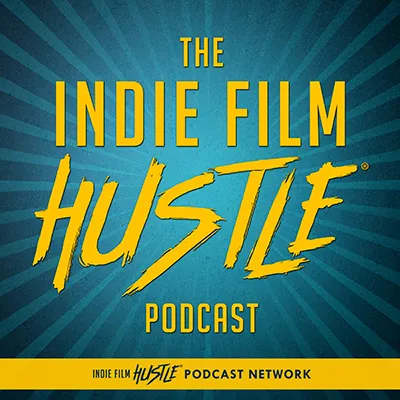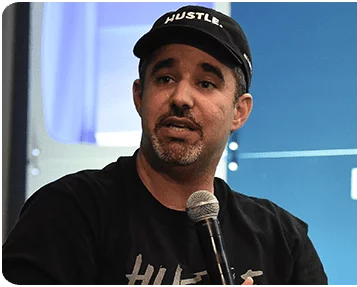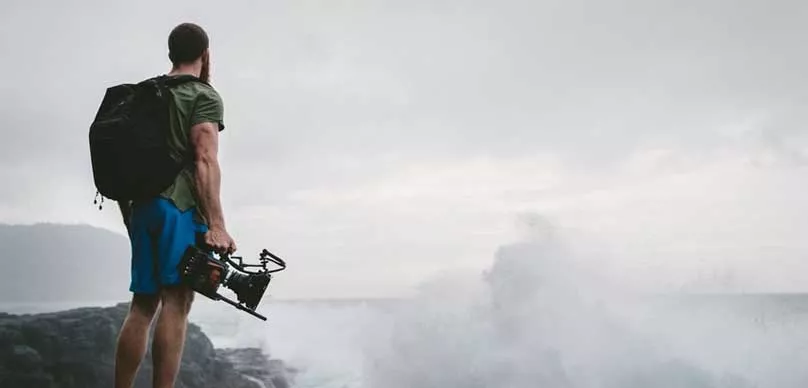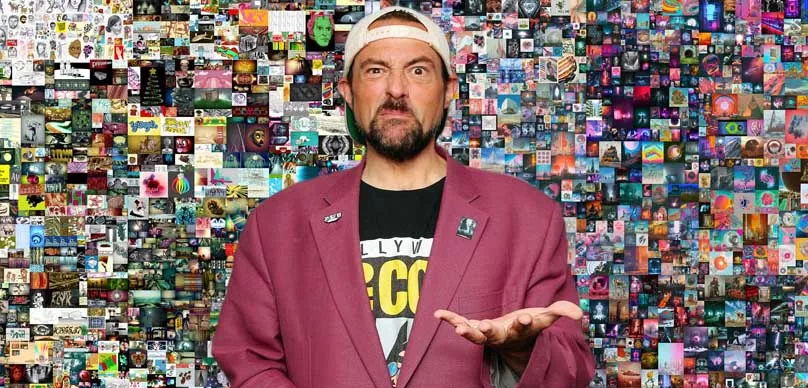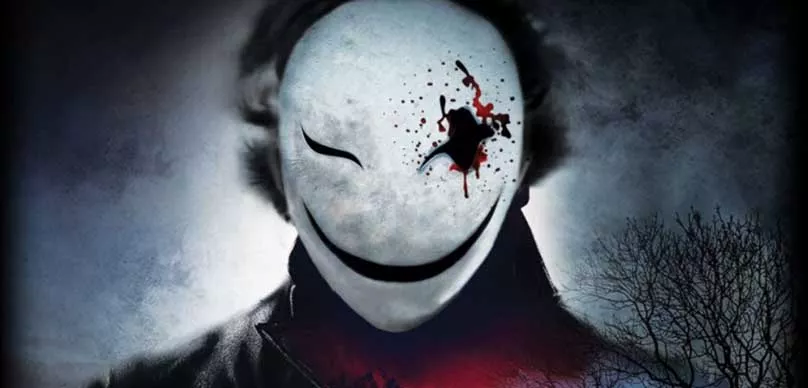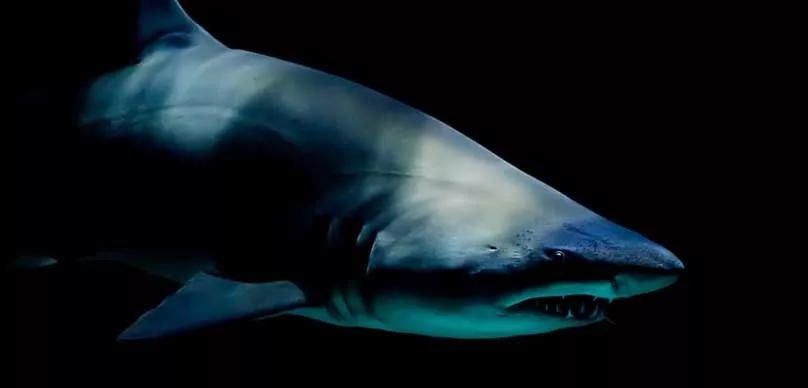Making a Short film can be tough but selling a short film can be impossible. Here’s my story on how I did both.
I directed a small action short film a few years back called BROKEN (Watch it on Indie Film Hustle TV) I shot the short film on MiniDV Tape (yes I’m old) on the Panasonic DVX 100a, the indie film workhorse of its day.
My team and I filmed it in West Palm Beach Florida (not exactly the Mecca of the film industry) and it starred only local, no named actors.
Now once the filming was over I marketed the living hell out of that short film. It went on to screen at over 250 international film festivals, won countless awards and was covered by over 300 news outlets.
That little short film had a life of its own. I even got a review from legendary film critic Roger Ebert (to hear the full story on how that happen to take a listen to this podcast: Getting Attention from Influencers & Gatekeepers)
“BROKEN is essentially a demonstration of the mastery of horror imagery and techniques. Effective and professional.” – Roger Ebert
Now you must be asking,
“But Alex how the hell did you make money with it?”
Well, I knew that no one would pay “real money” for a 20-minute short film, shot on MiniDV, with no-name actors, and from a first time director to boot. So I thought like a Filmtrepreneur and planned to create a guerilla indie film school with over 3 hours of footage, tutorials, commentaries and more.
By creating all the supplemental material and packaging with the short film on DVD I created a viable product for the marketplace.
VOD (Video on Demand) and digital download technology were just getting off the ground and still very expensive if it worked at all. Youtube was not “Youtube” yet, it had just launched. So DVD was the only way to go.
I went after every message board and film news outlet I could get my hands on. I’d had created so much hype around the release that on day one I sold over 250 DVDs for $20.00 a pop. That’s $5000!
The orders kept coming and I went on to sell over 5000 copies worldwide (and counting), shipping them out of my bedroom in Fort Lauderdale, FL.

Speaking on a panel at the Director’s Guild of America opening night at Hollyshorts! Film Festival
10 years later I’m still selling copies today, as crazy as might sound. I’ve probably have generated well over $90,000 selling that little short film over the years. All because I understood my marketplace and what it needed.
At the time there was nothing on the market like the BROKEN DVD; no courses on how to make a low budget indie feature or short film with low budget technology. BROKEN has found a new life in Indie Film Hustle’s first online educational course “BROKEN (Watch it on Indie Film Hustle TV)” More on that later.
Right-click here to download the MP3
Alex Ferrari 0:00
So this episode today, I wanted to talk about a question that I get asked a ton. It's something that I did almost 10 years ago now was 11, over a little was 11 years ago at this point. And I talk a lot about this little short film, I think in the most, it's the most talked about short film in history. But my film that I did 10 years ago called Broken, I was able to do something very special with that film back then, and continue to do stuff with that film. And my other works today. And I wanted to share with you guys a little bit of how I was able to generate a substantial amount of money selling and self distributing, broken and now my other works as well. So when I created broken, it was a short, I'll give you a quick, quick story about it if I haven't mentioned that already on the show. But the quick story of broke it is that it was a shot as a small short film, shot for about $1,000 shot on mini DV back in 2004. There was no high end technology back then. So I was editing it on Final Cut shot on a mini DV. But what I did do was create a look for the film because of my post production experience. And I took the format of mini DV and did something really cool with it that a lot of people hadn't seen before. So what I did was did a lot of color grading and made it look in a very filmic. And the way it was and a lot of filmmakers started asking me how I was doing it and how I did it. So when when I released the trailer, like when I first started the movie, I had no plans on selling it. I don't think I didn't even understand what I was going to do with it. I just wanted to try to get it out there and see what would happen with it. But as I started posting in places and posting the trailer, in places people kept asking me how did you do those visual effects, which by the way, we did over 100 visual effects in this little short film. So people were asking me how did you do the visual effects? How did you do the had the magic, that camera looked like that I have that camera, which was the dv x 100 A the workhorse of its day. I still love that little camera, they were asking me how I'm able to do it, I can't do it. I have that camera, well, your techniques. So that started giving me the idea. When I first was about to start doing broken, I looked everywhere for some sort of resources to be able to make broken as far as like DVD tutorial something to show me how to make a mini DVD movie editing on Final Cut just something to teach you how to make independent film and believe it or not back in 2004. There wasn't a whole lot. There was actually nothing, I couldn't find a thing about how to make movies for that kind of budget with that kind of technology. YouTube was just it's an infancy was just getting started. And it definitely wasn't owned by Google at the time. So the quality was really horrible as well. It just there was nothing there. So I saw that there was a a hole in the marketplace. So I was like, Well, you know what I'm going to do this. I'm going to learn a whole bunch of stuff on how I did it along the way. And I documented everything I had to documentary crews following us through the entire five days shoot documentary crews being my friends.
And we shot just hours and hours and hours and hours and hours of behind the scenes footage of how we made this movie. So then I went on and spent about six weeks I would imagine to create over three hours or so of behind the scenes tutorials, kind of like a gorilla film school and put it on DVD. Now while this was going on, I was creating a buzz about the movie. For about six months, I was creating a lot of buzz about the movie. I was getting into film festivals. We were winning awards. We were getting written up. We went to Sundance, we've just done a whole bunch of different things with the film. And I was on spin offs to me now I know this now is like you I was doing a product launch. A lot of people talk about doing a product launch online. There's a sequence that you go by and I was doing it and I didn't even know what I was doing at the time. But I was actually Creating a product launch sequence, creating anticipation for the product. So when I started released it, it was very excited about the movie then, when I announced that I was creating this DVD, about how to make the movie, and how I made it, and all the tricks and tips of how I did it, and it was so full of information so full of rich content, the indie film community at the time, really, really just embraced it and went crazy for it and started sharing it and started talking about it. People were already getting excited for I didn't even do any pre orders, I should have done pre orders, I didn't do any pre orders. All I did was like, Hey, if you want to know when it comes out, just sign up for my email list. And I was even getting email lists at the time. And that wasn't something in vogue back in 2004. So I was doing all this kind of instinctually I can't say there was a master plan that I was doing this back then. But so anyway, the day opens that I launch it, all of a sudden, I just hear Ding, ding, ding, ding, ding, all my emails keep coming in from PayPal. And we sold over 250 DVDs in the first day, which was about five grand, because we were selling the DVD at 20 bucks a pop, my partner and I had to run to the post office handwrite all all of the addresses hand stamp all the addresses, we didn't have any infrastructure laid out and the printing of postage, nothing. So it was it was pretty crazy. And then it just kept building and kept selling and kept selling. Okay, building a building. But I was able to create a tremendous amount of press and a tremendous amount of energy around the product. But it was all about creating a piece of a product, if you will, that had content for people like I know, I wouldn't have been able to sell the short film by itself. It just didn't make any sense. It has no stars in it. Yeah, it's an action genre. And, you know, there's a lot of visual effects and things like that in it. But there was just no way someone was going to pay 510 20 bucks to buy this on a DVD, there was no digital downloads, no VOD at the time, that was at least accessible to indie filmmakers like myself. So when I was able to do this, I, I was able to create this, this product that had a tremendous amount of content, and people just went crazy for it, and then start talking about it and start sharing it. And what I was able to do is generate a sold, we've ended up selling over 5000 DVDs, over the course of the years have gone by. And it was all because I was able to identify a hole in the marketplace and understand what they wanted and fed my marketplace fed my audience what they wanted. And what they were asking for. It was pretty humbling, honestly, the whole process of what happened with broken so I tried to do something similar later on with our next film sin, where I was able to do some stuff on with some digital downloads through iTunes. But that was a kind of wonky way of doing it didn't create a bunch of content, like I did with broken was just wasn't as big of a movie. And then years later, I created my movie Red Princess Genesis, which is the animated prequel to references blues, which is the live action short for my feature film that I hope to make one day. And I created a whole bunch of content around that. So what I decided to do recently is to create a new brand new guerrilla indie film school encompassing all of my movies, and giving you almost seven hours of how to stuff like how to everything from pre production production post production, how to market your film, I do brand new content on how I marketed the film's how I went through it, how I how I built the websites, what techniques I used as far as theories and the concepts that I used, why I was doing certain things still hold very true today. So I put this all together under the name lipstick and bullets, lipstick and bullets was a Blu ray compilation of all of the stuff I did, and released that in England. I got all the rights back. And now I'm going to distribute them as an experiment through indie film hustle. So indie film hustle will present the guerrilla indie film school lipstick and bullets edition. So it's gonna have a ton of stuff. It's available. Now, if you head over to indie film hacks, calm, that's indie film hacks, calm. And since you're listening to this podcast, you're going to get a coupon for 20% off. Right now I'm selling it for $47 that will go up in the future. Right now. It's an introductory offer, I think it's a super deal for that much content, or you can rent it for 15 bucks. We're doing it all through VH x.tv going to have the the some representative from VH X on the show in the coming weeks as well. So look out for that explaining to you how how to do video on demand or self distribute through their platform, which is amazing. So far, I love it. The coupon code is I FH tribe. That's I F h tribe and you get 20% off the sale price of $47. So it ends up being like $37 and change. So you get almost 10 bucks off. So to wrap it up guys create how I was able to create this kind of amount of money with a short film is these key elements you have to remember. Now write these down, understand your audience, understand where your audience is, go to that area, where they are, where they're hanging out, whether that be on Facebook groups, whether that be in on forums, at film festivals, wherever they might be hanging out, depending on what that group is, if it's about, I always use the vegan chef example. But if they're vegan chefs don't go to the foodie blogs go to, there's so many different places you can go just find out who your audience is, okay? Once you find out who do you audiences, then start crowdsourcing them starting interacting with them start, you know, asking them what they want, when you find that information out, then build a product that you can sell to them through your movie. So whatever that movie is, and I'm using the word product, but it's really your movie. So write the movie around it around what they want, build a product base about what they want, whether that be hats, T shirts, extra extra materials, film, schools, whatever, whatever they want. If it's you're doing a movie about vegan chefs rom com about vegan chefs, my God, you'd be a fool not to create a whole series of videos on how to make vegan like, you know, a vegan chef of vegan recipes, and show them how to do it, because that's what they want. You know, that's something that they would want to do. If you're making a horror movie, it would be awesome to do tutorials about how you're making, you know, the heads explode, how are you doing it, you know, how you making the fake blood recipes, stuff like that, believe it or not, people really, really love, especially if you're focusing on other filmmakers or other people who are trying to do what you're doing. Once you do that, then you sell the product to them. And now how you how you sell that product to them in 2004 2005 DVDs with the answer, there were no other options. Today, I would not suggest you do a DVD, it's not a great place to it's a lot of upfront costs, and time. And all that stuff, I wouldn't do blu ray either. What I would do is strictly video on demand through through companies like VH X through Gumroad, through Vimeo Pro, any of those guys just do it directly to your consumer and cut out the middleman as much as you can with your project. And again, this is a case by case basis. Some projects have budgets that, you know, this is a much longer conversation about which project makes sense to do VOD and do this for short film and what I was doing to make perfect sense I spent $8,000, you know, I was able to recoup my money and then some with with what I was able to do. If you were doing $100,000 movie, you better have a heck of a marketing plan, and a heck of a business plan on how are you going to be able to recoup your money. And that goes into crowdsourcing crowd, crowd building crowdfunding, all those kinds of different topics. But that's how I was able to do you know, generate a tremendous amount of money, close over $90,000 Over the years selling broken as a broken on DVD. And now I'm continuing to sell not only some of the hand picked stuff from broken, that is still very relevant, I'm not going to give you a tutorial on mini DV. But a lot of the a lot of this cool stuff that was still very, very relevant today. I have picked that by creating and also created a bunch of stuff for red Princess references Genesis sin, and then marketing materials on how to market all of A plus tons of commentary tracks on composing and visual effects and all that kind of stuff for indie film. So I also include in this guerrilla indie film school, my book, The Art of broken, I've always been a big fan of all the art of books like The Art of matrix art, Sin City, and so on. And Ken Robinson and Dan create, and I put together this book with all of the artwork from not only broken, but for the defunct feature film version of broken, but there was so much artwork, and you can kind of see as an example of what can be done with some with a short film for God's sakes. But it's another product line. And we did sell it a hardcover hardcover copies of it. During the days of broken when it came out. We sold a handful of them. But I wanted to give this to you guys not only as an example of what can be done with a project, but also just for fun for people who just want to see all this cool, amazing artwork they all the artists did. I also include all the marketing materials of all the four movies that I did. So all the poster work all the kind of extras I did on the websites and things like that. So you can kind of see the progression of how I was able to market all of our films, and how we were able to get into over 500 film festivals and so on. And how about that you also get my ebook on how to get into film festivals for cheaper free. And that gives you a complete detail explanation of how I was able to get into over the into over 500 film festivals after the first 30 or so film festivals. I spent I spent over $1,000 in submission fees were broken, it was ridiculous. But after a certain time, I was like, You know what, I don't know, if I'm going to be able to like, at this point in the game, any film festivals I get into after this, how much more they're gonna like boost my career boost the film. So I was like, You know what, at this point in the game, I'll be more than willing to pay a submission fee if I'm able to play in the movie, but just to pay to submit and just maybe I'll get into it wasn't playing that anymore. So I decided to create these techniques that worked very, very well.
So you also get that in this package as well. It's a hell of a package, it really, really is a hell of a package, I would have killed to have it. And for the price, honestly, it's awesome. And you get to watch it as much as you want, whenever you want to watch it. Again, head over to indie film, hacks.com indie film hacks, calm and use that coupon code ifH tribe. So on a side note, guys, I wanted to thank you again for making this podcast the number one filmmaking podcast on iTunes. I am humbled beyond, by beyond all recognition. It's amazing that within a three month period, this little show has been able to rank all the way as to the number one spot or filmmaking in iTunes. So I humbly humbly thank all my listeners, all my all the all the tribe, all the indie film hustle tribe, for doing that. Thank you again, so so much for helping us get to that point. And please, if you love the show, or if you just want to give us an honest review, head over to iTunes, give us a review, give us a give us a good rating. And that will help us even get more and more people to listen to the show and help more and more filmmakers. So thanks again guys for listening. I really hope this helped you guys out a lot inspired you a little bit that it can be done. So keep that dream alive. Keep that hustle going. I'll talk to you guys soon.
Sign up to receive email updates
Enter your name and email address below and I'll send you periodic updates about the podcast.
YOUTUBE VIDEO
LINKS
- Rise of the Filmtrepreneur®: How to Turn Your Indie Film into a Moneymaking Business
- Rise of the Filmtrepreneur®: FREE AUDIOBOOK
- Indie Film Hustle TV (Streaming Real-World Film Education)
- Rev.com – Closed Caption Your Indie Film ($10 off Your First Order)
- Alex Ferrari’s Shooting for the Mob (Based on the Incredible True Filmmaking Story)
- VideoBlocks.com – (IFH Discount SAVE $50)
SPONSORS
- Bulletproof Script Coverage – Get Your Screenplay Read by Hollywood Professionals
- Audible – Get a Free Filmmaking or Screenwriting Audiobook
- Rev.com – $1.25 Closed Captions for Indie Filmmakers – Rev ($10 Off Your First Order)

